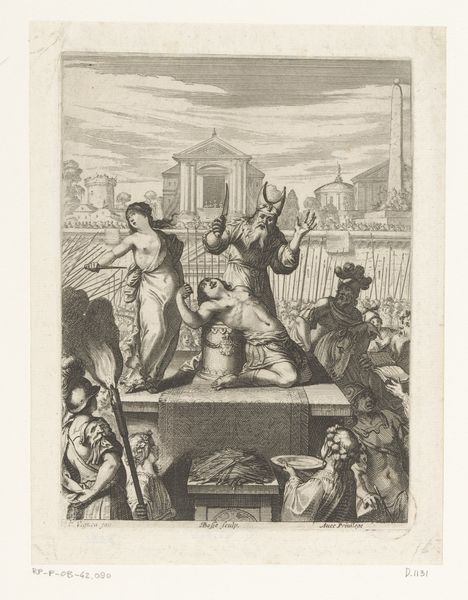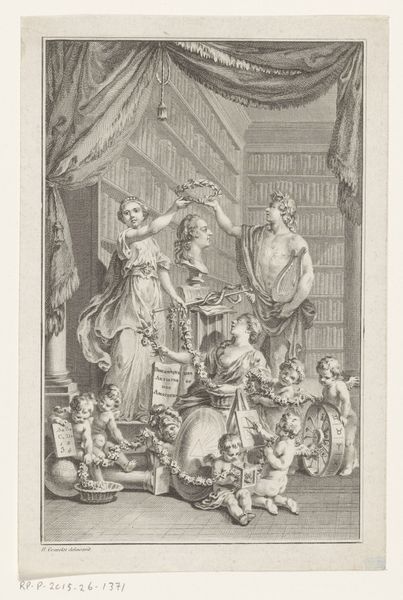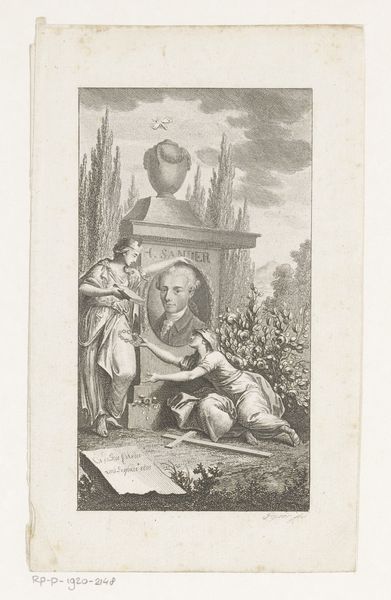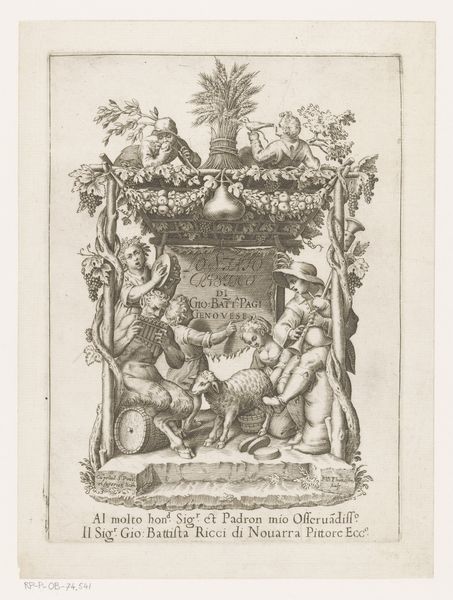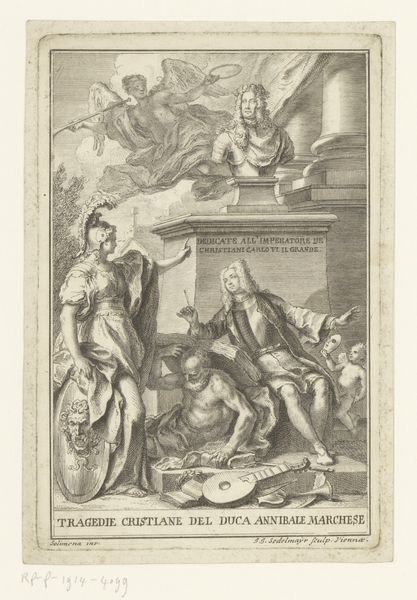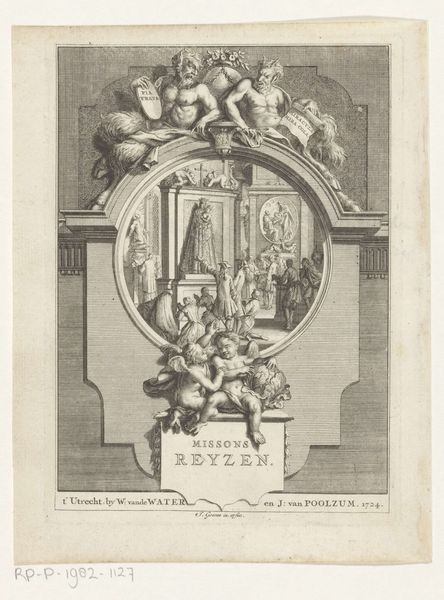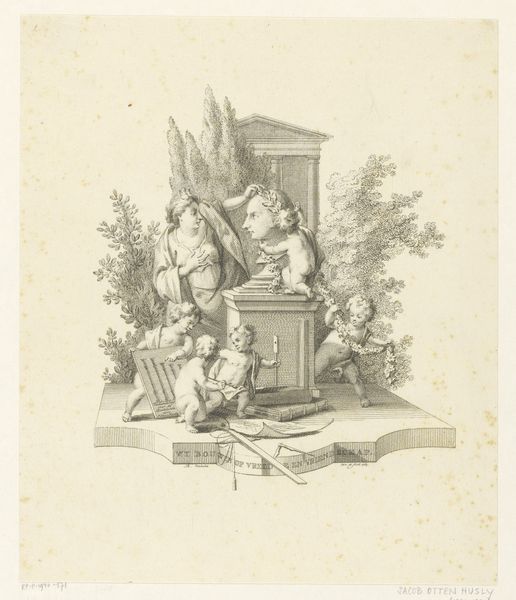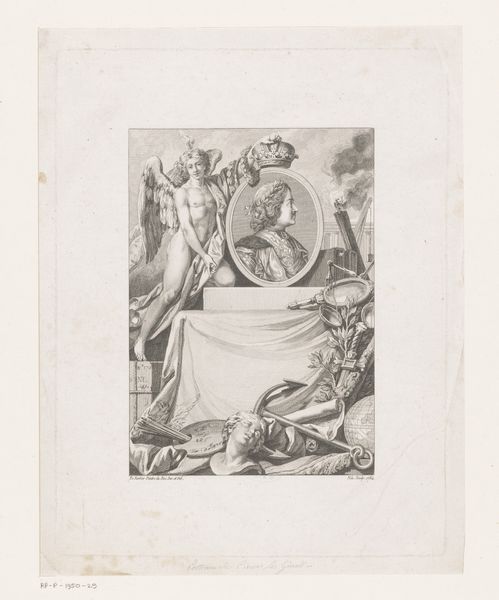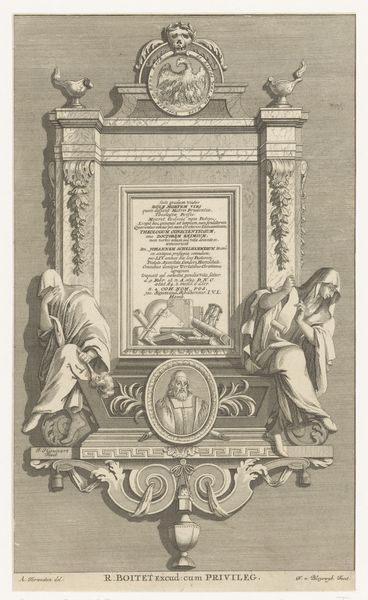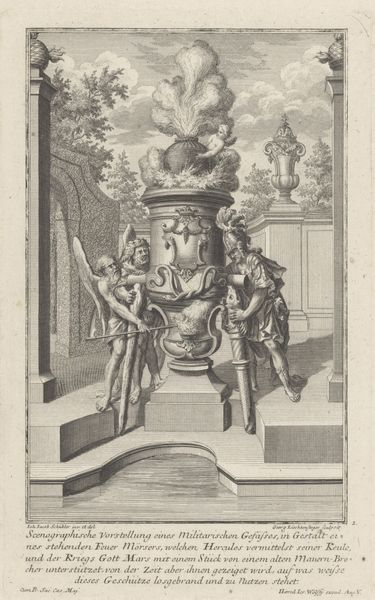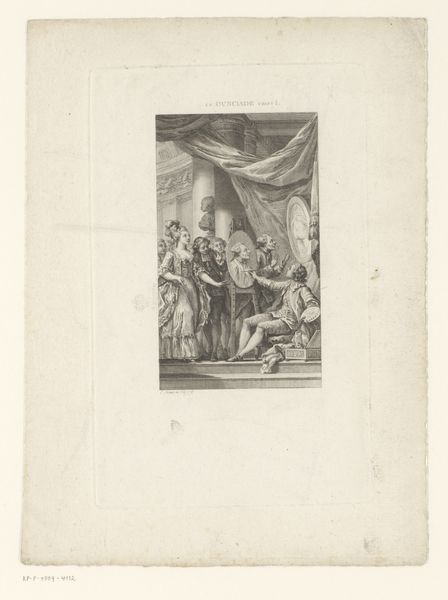
print, engraving
#
portrait
#
allegory
#
baroque
# print
#
history-painting
#
engraving
Dimensions: height 310 mm, width 203 mm
Copyright: Rijks Museum: Open Domain
Curator: This print, currently held at the Rijksmuseum, is a portrait of Christiane Augustine Platner, created sometime between 1680 and 1767 by Martin Bernigeroth. It is done in the Baroque style and employs engraving as its technique. Editor: My first impression is how cool the tone is. The stark grayscale palette accentuates every crisp detail and elaborate shape, highlighting the rich engraving lines. It's a striking visual, and a real display of craft. Curator: Absolutely. It's interesting to consider Bernigeroth's role within the established portraiture conventions of his time. Notice how Platner is elevated, quite literally, upon a pedestal, transforming the subject into a symbol of power and virtue. The allegorical figures around the pedestal act as framing devices while also hinting at aspects of the woman's life or virtues that she embodied. Editor: The composition seems really contrived. This makes me think of production of images like this, how artisans probably spent hours, even days or weeks, carving into copperplates to achieve such incredible refinement. Did they intend to immortalize not just the sitter but their work too, elevating this craft? Curator: Engraving allowed for the mass production of images, making portraits like these more accessible. While celebrating an individual, it also disseminates ideals and upholds the social order. Look at the deliberate composition, and the allegorical details such as the female figures; they play an important role in conveying societal expectations and communicating Platner’s status and accomplishments. Editor: The textures here, particularly in the draping fabric, must have required significant skill. Do we know what kind of circulation this work might have had, who was buying prints of portraits back then? It certainly makes you consider the labor involved in these things. Curator: Such prints would have been accessible to a particular segment of society – those with enough affluence. It reinforced a specific socio-economic structure through the circulation and consumption of these portraits. These works really become objects that reinforce class status. Editor: Thinking about it this way offers a whole new viewpoint. Seeing it as more than just "art," instead looking at it as an accessible medium and a showcase of craftsmanship, also rooted in specific historical conditions, is incredibly enriching. Curator: Yes, definitely an exercise in carefully observing its technique within the culture of its time allows us to understand both the society that made it and the role of art within that framework.
Comments
No comments
Be the first to comment and join the conversation on the ultimate creative platform.
